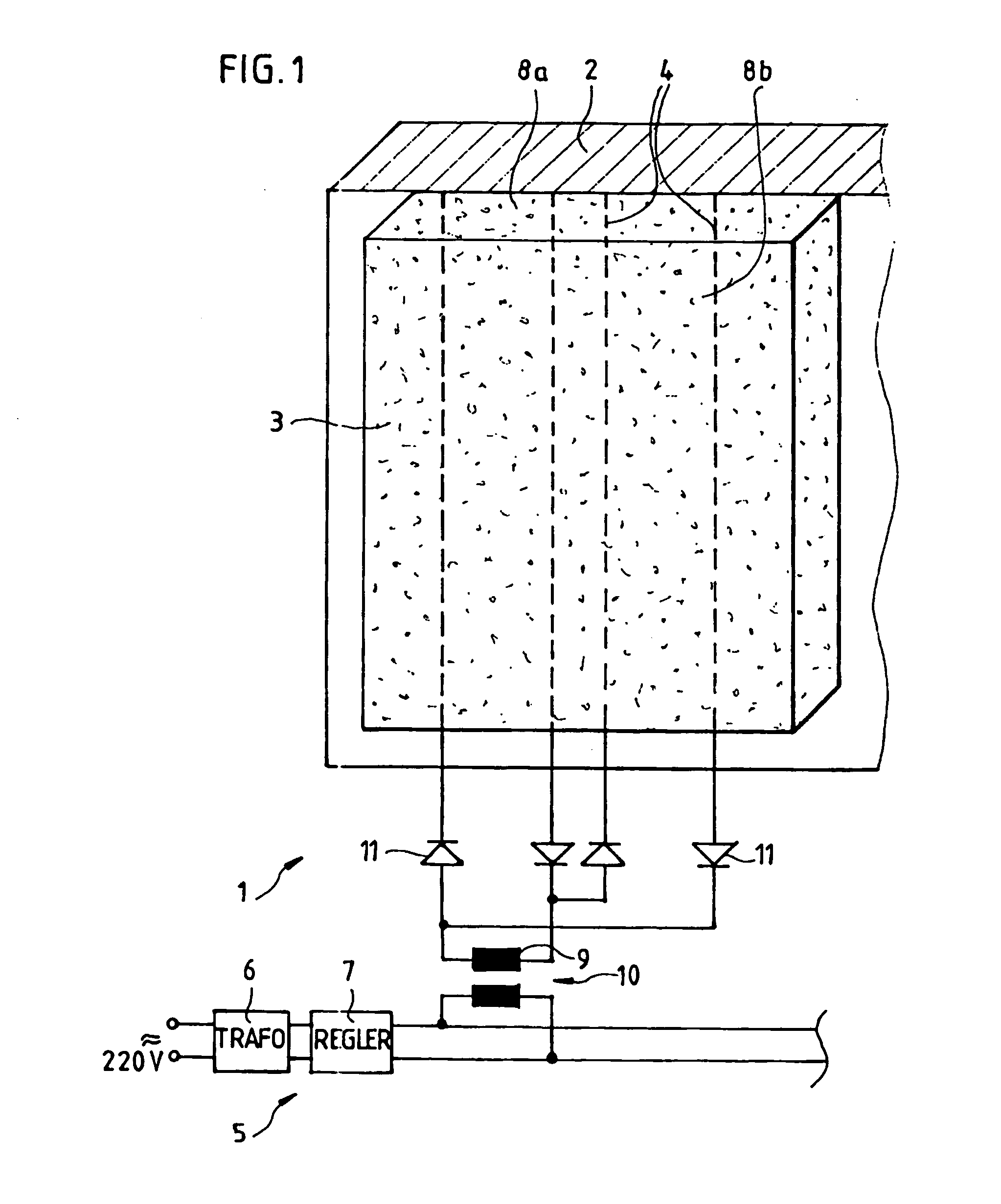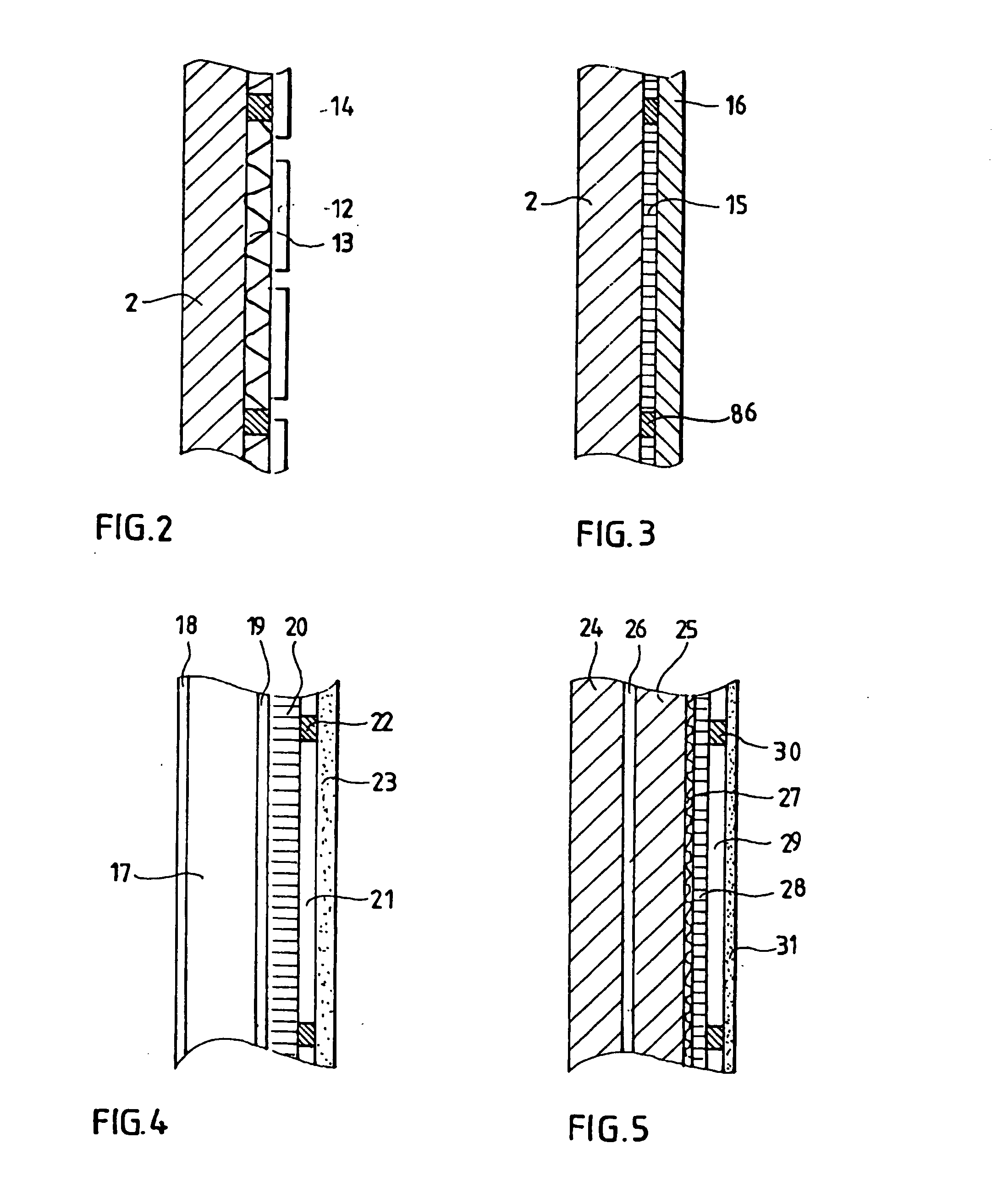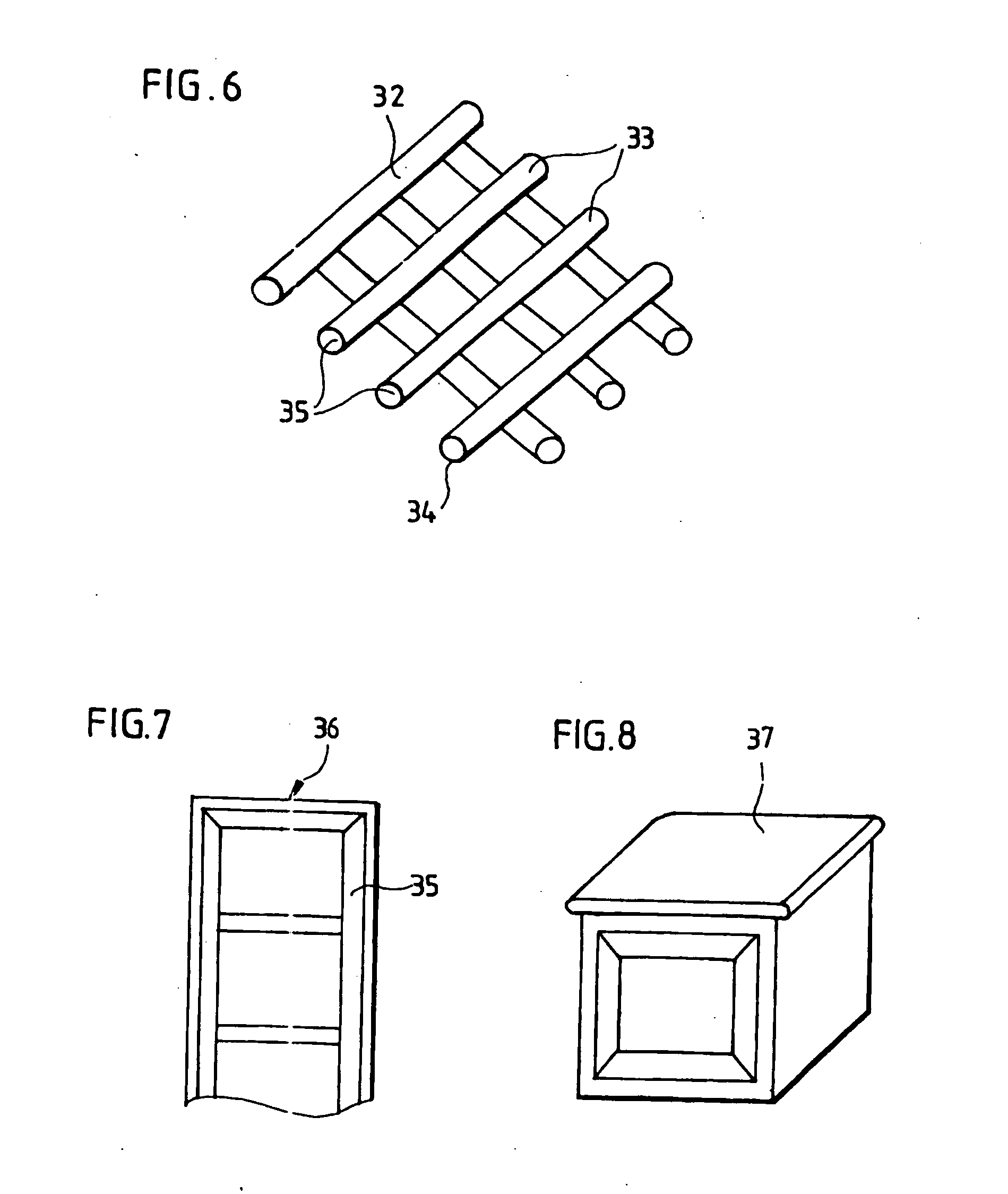Electrical panel heating device and method and building materials for the protection thereof
- Summary
- Abstract
- Description
- Claims
- Application Information
AI Technical Summary
Benefits of technology
Problems solved by technology
Method used
Image
Examples
Embodiment Construction
[0066]FIG. 1 is a schematically and greatly simplified drawing of one embodiment of a heating device 1 according to the invention. Disposed on and / or at a solid, load-bearing-capable substrate 2 is a heating layer 3 composed of a cured building material according to the invention. The heating layer 3 preferably has a smaller thickness d than the load-bearing-capable substrate 2, for example a thickness d of between 1 mm and 10 mm, and, by virtue of conductive particles mixed into an inorganic binder matrix, its electrical resistivity ρ is lower than the specific electrical conductivity ρ of the substrate material 2, for example at least twice as high, preferably at least twenty times higher, particularly at least two hundred times higher.
[0067]Extending at or in the conductive heating layer 3 are two or more electrically conductive contacts 4. These contacts 4 can, for example, be constituted by copper tracks or copper wires, which preferably run parallel to one another, particularl...
PUM
| Property | Measurement | Unit |
|---|---|---|
| Distance | aaaaa | aaaaa |
| Distance | aaaaa | aaaaa |
| Electrical conductivity | aaaaa | aaaaa |
Abstract
Description
Claims
Application Information
 Login to View More
Login to View More - R&D
- Intellectual Property
- Life Sciences
- Materials
- Tech Scout
- Unparalleled Data Quality
- Higher Quality Content
- 60% Fewer Hallucinations
Browse by: Latest US Patents, China's latest patents, Technical Efficacy Thesaurus, Application Domain, Technology Topic, Popular Technical Reports.
© 2025 PatSnap. All rights reserved.Legal|Privacy policy|Modern Slavery Act Transparency Statement|Sitemap|About US| Contact US: help@patsnap.com



